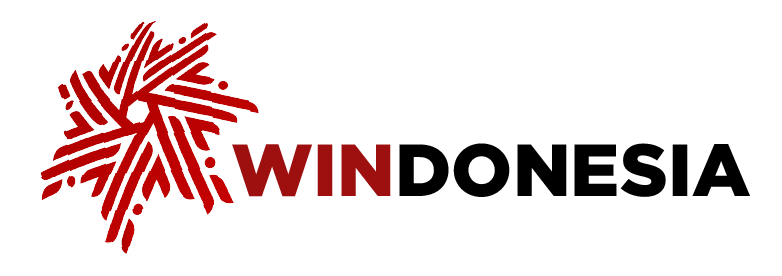Sector
Transportation
With a population exceeding 280 million people, Indonesia relies heavily on a robust transportation network encompassing sea, air, and land routes to connect its vast island chain and facilitate economic activity effectively. This reliance has made the transportation sector a leading sector in the country.
View moreTransportation
With a population exceeding 280 million people, Indonesia relies heavily on a robust transportation network encompassing sea, air, and land routes to connect its vast island chain and facilitate economic activity effectively. This reliance has made the transportation sector a leading sector in the country.
In 2022, the sector contributed Rp 983 trillion to the national gross domestic product (GDP) at current prices. Notably, regions where transportation is a leading sector include Aceh, West Sumatra, Bengkulu, Lampung, West Java, the Special Region of Yogyakarta, and Central Kalimantan. Additionally, North Kalimantan, Gorontalo, North Sulawesi, Maluku, East Nusa Tenggara, and Bangka-Belitung consider the transportation sector as a leading sector.
The sector has also experienced a significant boost in recent years, with the transportation and warehousing subsector achieving a staggering GDP growth of 15.93 percent year-on-year (YoY) in the first quarter of 2023.
During the COVID-19 pandemic, Indonesia’s auto industry was severely affected, leading to a decline in both vehicle sales and production. Despite this decline, the transportation sector as a whole continued to attract foreign direct investments (FDI). In 2023, foreign companies poured roughly US$2 billion into the country’s vehicle and other transportation subsectors, highlighting the continued potential that investors see in this sector.
In terms of land transportation, infrastructure projects supporting rail transport such as the Light Rail Transit (LRT), started operations in mid-August 2023. Additionally, the development of Phase 2 of the Mass Rapid Transit (MRT) Jakarta, which includes new routes, is currently underway, with 6 kilometers already completed out of a total of 13.3 kilometers. Moreover, railway transportation saw a year-on-year increase of 69.37 percent in the number of passengers nationwide.
Sea transportation is also an important subsector of the transportation industry, primarily due to the trade sector’s heavy dependence on this mode of transportation. It is highly favored for its perceived economic efficiency in transporting goods. Although sea transport may not be the main method of transportation for many individuals, the number of passengers using sea transport in 2023 increased by 13.30 percent compared to the previous year.
Furthermore, air travel in Indonesia continues to rise with the increase in economic activity. The number of passengers using domestic air transportation increased by 32.69 percent year-on-year. Additionally, Soekarno Hatta International Airport has surpassed Singapore’s Changi Airport to become Southeast Asia's busiest airport in April 2024. According to reports, the airport's flight seat capacity has also reached 3.34 million, the highest among airports in the Southeast Asia region.
Latest News
West Kalimantan Governor Ria Norsan confirmed that a new international flight route from Pontianak City, West Kalimantan to Kuala Lumpur, Malaysia will begin operating on Jan. 5, 2026. He conveyed the information after the governor received a visit from Lion Air Group Corporate Communations Strategic Danang Mandala Prihantoro at the West Kalimantan Governor's Office in Pontianak City on Dec. 29, 2025.
"Alhamdulillah, Batik Air, part of the Lion [Air] Group, has officially announced the opening of a new international flight route connecting Pontianak (PNK) directly with Kuala Lumpur (KUL), Malaysia by Jan. 5, 2026,. This strategic step is expected to spur economic growth and tourism in the region," said Ria.
He stated that the inaugural flight on this route by a Batik Air aircraft will fly from Kuala Lumpur to Pontianak on Jan. 5, 2026, and vice versa from Pontianak to Kuala Lumpur on Jan. 6, 2026.
"Initially, this service will be available three times a week. The aircraft [for this route] will undergo a remain overnight (RON) procedure, or stay overnight in Pontianak before returning to Malaysia the next day," she said.
Lion Air Group's Danang explained that this route is more than just a connection between two cities, it is also an international gateway for the people of West Kalimantan.
"By transiting in Kuala Lumpur, people from Pontianak now have direct access to more than 40 other international destinations," he explained.
Danang continued that several prime destinations that would be available for people completing the flight route include China's Guangzhou and Beijing, as well as East and South Asian routes such as Japan and India, and religious tourism destinations that provide easy access for Umrah travel.
In addition to international routes, Lion Air Group is committed to strengthening its domestic network in West Kalimantan to support inter-regional transportation mobility. Currently, Pontianak City is connected to other regions within West Kalimantan, such as the regencies of Ketapang, Kapuas Hulu, and Sintang.
Danang also emphasized that this transportation connectivity will be expanded to major cities in Indonesia, such as Yogyakarta, Surabaya, Semarang, Balikpapan, and Makassar. This integration of domestic and international routes is expected to provide tangible benefits for businesses and investors, particularly in facilitating investment access to West Kalimantan. The new flight route is also expected to benefit the tourism sector and streamline the flow of goods and services.
"Therefore, facilitating connectivity is considered a key factor in accelerating regional economic growth and providing convenience for the local community, both for family and business purposes," he concluded.

